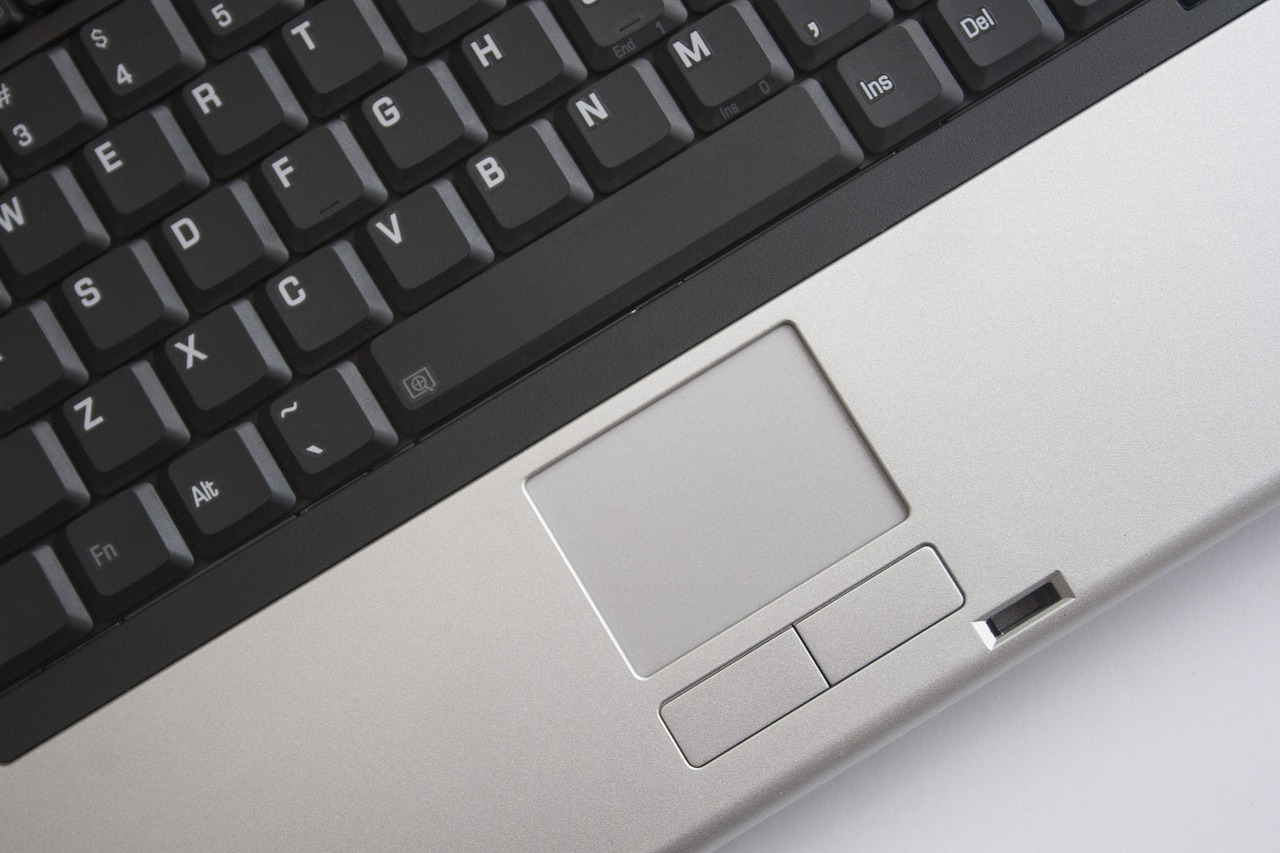
Enabling the touchpad on a Dell laptop is easy and will only take a few minutes. The process is slightly different, depending on the type of touchpad your laptop has. This article will explain the different types of touchpads available in Dell laptops, the basic touchpad functionality, and the pros and cons of using a touchpad over an external mouse.
Content of the page
Check also how to turn the touchpad off on Dell laptops.
Understanding Your Dell Laptop’s Touchpad
A touchpad is a pointing device that is found on most laptop computers. It is typically located at the front of the laptop and is used to control the cursor on the laptop’s display. It is also known as a trackpad. The touchpad is sensitive to pressure, allowing the user to use their fingers to control the cursor on the display.
You may want to learn how to properly clean a touch screen on laptop.
Types of Touchpads in Dell Laptops
Dell laptops come with several different types of touchpads. The most common type is the “Synaptics” touchpad, which is recognized by its silver-colored surface. Other types of touchpads include Alps, Elan, and Sentelic. The type of touchpad your laptop has will depend on the model and age of the laptop.
Basic Touchpad Functionality and Gestures
The basic functionality of a touchpad is to control the cursor on the laptop’s display. To do this, you simply slide your finger across the surface of the touchpad. Most touchpads also support basic gestures, such as tapping to select an item, double-tapping to open an item, and pinching and zooming to zoom in and out of a document.
Touchpad vs. External Mouse: Pros and Cons
Using a touchpad can be more comfortable than using an external mouse, as it requires no additional hardware. However, a touchpad is not as precise or responsive as an external mouse, and it can be difficult to use for tasks that require precise movements. Additionally, touchpads can be difficult to use for extended periods of time, as the user’s hands must remain in contact with the touchpad.
Overall, using a touchpad is a matter of personal preference. If you find yourself using your laptop frequently and require precise movements, an external mouse may be a better option. However, if you only need basic cursor control, a touchpad can provide an adequate solution.
Enabling the Touchpad on Your Dell Laptop: Step-by-Step Guide
Enabling the touchpad on your Dell laptop is an easy task that can be completed in a few simple steps. Depending on the model and configuration of your laptop, you can enable the touchpad by pressing a physical button, navigating to touchpad settings in Windows, or accessing the BIOS settings. This guide will walk you through the necessary steps to enable your touchpad and get it running.
Using the Touchpad Enable/Disable Button
Many Dell laptop models come with a dedicated physical button or switch to enable or disable the touchpad. This button is usually located near the top-right corner of the keyboard and is marked with the symbol of a pointing finger. Pressing this button will immediately enable or disable the touchpad.
Enabling Touchpad via Windows Settings
If your laptop does not have a dedicated physical button to enable or disable the touchpad, you can access the touchpad settings through Windows.
Windows 10: Navigating to Touchpad Settings
On Windows 10 machines, navigate to the Start Menu and type “touchpad” in the search bar. Select the “Mouse & Touchpad Settings” option from the search results. This will open your touchpad settings window. In this window, you can toggle the touchpad on or off by toggling the switch at the top of the screen.
Windows 11: Accessing Touchpad Settings
On Windows 11 machines, navigate to the Start Menu and type “touchpad” in the search bar. Select the “Touchpad Settings” option from the search results. This will open your touchpad settings window. In this window, you can toggle the touchpad on or off by toggling the switch at the top of the screen.
Enabling Touchpad through the BIOS
If you are unable to enable or disable the touchpad through Windows settings or by using the dedicated physical button, you can access the touchpad settings through the BIOS. To access the BIOS settings, you will need to restart your laptop and press the BIOS key at the start-up screen. This key is usually one of the Function (F1-F12) keys, but it may differ depending on your laptop model. Once in the BIOS settings, navigate to the Advanced tab and select the Touchpad settings. Here you will be able to enable or disable the touchpad.
Updating and Troubleshooting Your Dell Laptop’s Touchpad
In addition to enabling the touchpad, you may also need to update the drivers and troubleshoot common touchpad issues.

How to Update Touchpad Drivers
Updating the touchpad drivers will ensure that your laptop is using the most recent version of the software and can help resolve common touchpad issues. There are two methods for updating the touchpad drivers: using Windows Update or downloading the drivers from the Dell website.
Using Windows Update
Windows Update is the easiest way to update your touchpad drivers. To access Windows Update, open your Start Menu and type “update” in the search bar. Select “Check for Updates” from the search results and follow the on-screen instructions to update your device drivers.
Downloading Drivers from Dell’s Official Website
If you are unable to update your touchpad drivers through Windows Update, you can download the drivers from the Dell website. Go to Dell’s website and enter your laptop’s model number or Service Tag number in the search bar. This will bring you to the support page for your laptop, where you can download the latest drivers for your touchpad.
Common Touchpad Issues and Solutions
If you are having trouble with your touchpad, there are a few common issues that may be causing the problem.
Touchpad Not Responding or Freezing
If your touchpad is not responding or freezing, try restarting your laptop. This will reset the touchpad and may resolve the issue. If this does not work, try updating your touchpad drivers as outlined above.
Erratic Cursor Movement
If you are experiencing erratic cursor movement, try adjusting the sensitivity settings on your touchpad. To do this, open your touchpad settings window and adjust the sensitivity settings accordingly.
Touchpad Gestures Not Working
If you are having trouble with touchpad gestures (such as two-finger scrolling or pinch-to-zoom), make sure that your touchpad drivers are up to date. If they are not, try updating your drivers as outlined above. Additionally, some laptop models have specific settings for touchpad gestures, so check your touchpad settings window to make sure that the gestures are enabled.
Customizing Touchpad Settings for an Enhanced Experience
Using the right touchpad settings can help you get the most out of your Dell laptop. Whether you’re looking to customize touchpad sensitivity, enable or disable tap-to-click, or customize touchpad gestures and scrolling, these tips will help you get your touchpad working just the way you want it.
Adjusting Touchpad Sensitivity

Adjusting the touchpad sensitivity can help you control how quickly your cursor moves and how easily it responds to gestures or clicks. To adjust touchpad sensitivity, follow these steps:
- Open the Control Panel.
- Go to Hardware and Sound and select Mouse.
- Choose the tab labeled Dell Touchpad.
- Select the tab labeled Touch Sensitivity.
- Adjust the slider to your desired sensitivity.
The higher the sensitivity, the faster your cursor will move and the more responsive it will be to your touch. If you find that your cursor is moving too fast or too slow, be sure to adjust the touchpad sensitivity first.
Enabling or Disabling Tap-to-Click
Tap-to-click is a feature that allows you to tap your touchpad instead of clicking the mouse buttons. To enable or disable tap-to-click, follow these steps:
- Open the Control Panel.
- Go to Hardware and Sound and select Mouse.
- Choose the tab labeled Dell Touchpad.
- Select the tab labeled Pointing.
- Check or uncheck the box labeled Tap to Click.
If you find that tapping the touchpad is too sensitive or not sensitive enough, you can also adjust the tap sensitivity by moving the slider to the left or right.
Customizing Touchpad Gestures and Scrolling
Dell laptop touchpads are equipped with gesture recognition, allowing you to perform certain actions with your fingers. To customize touchpad gestures and scrolling, follow these steps:
- Open the Control Panel.
- Go to Hardware and Sound and select Mouse.
- Choose the tab labeled Dell Touchpad.
- Select the tab labeled Multi-Touch Gestures.
- Check or uncheck the boxes for the desired gesture.
You can also customize the scrolling options to determine how the touchpad responds when you scroll with two fingers. To do this, select the tab labeled Scrolling and check or uncheck the boxes for the desired scrolling option.
Conclusion: Making the Most of Your Dell Laptop’s Touchpad
Customizing your Dell laptop’s touchpad settings is an easy way to get the most out of your laptop. Whether you’re adjusting touchpad sensitivity, enabling tap-to-click, or customizing touchpad gestures and scrolling, these tips will help you make the most of your laptop’s touchpad.
